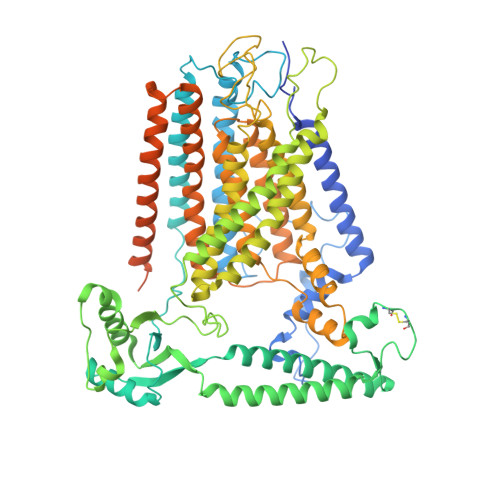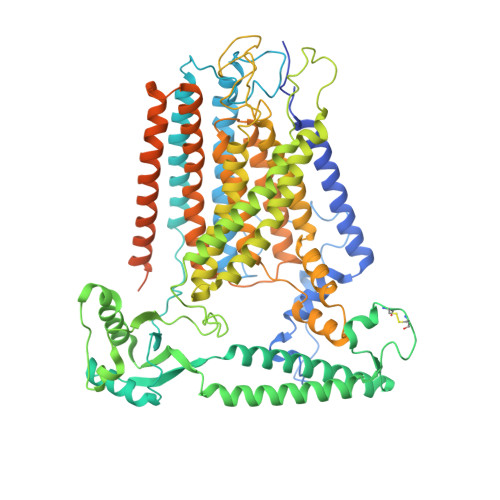Cryo-EM structure of TMEM63C suggests it functions as a monomer.
Qin, Y., Yu, D., Wu, D., Dong, J., Li, W.T., Ye, C., Cheung, K.C., Zhang, Y., Xu, Y., Wang, Y., Shi, Y.S., Dang, S.(2023) Nat Commun 14: 7265-7265
- PubMed: 37945568
- DOI: https://doi.org/10.1038/s41467-023-42956-2
- Primary Citation of Related Structures:
8K0B - PubMed Abstract:
The TMEM63 family proteins (A, B, and C), calcium-permeable channels in animals that are preferentially activated by hypo-osmolality, have been implicated in various physiological functions. Deficiency of these channels would cause many diseases including hearing loss. However, their structures and physiological roles are not yet well understood. In this study, we determine the cryo-electron microscopy (cryo-EM) structure of the mouse TMEM63C at 3.56 Å, and revealed structural differences compared to TMEM63A, TMEM63B, and the plant orthologues OSCAs. Further structural guided mutagenesis and calcium imaging demonstrated the important roles of the coupling of TM0 and TM6 in channel activity. Additionally, we confirm that TMEM63C exists primarily as a monomer under physiological conditions, in contrast, TMEM63B is a mix of monomer and dimer in cells, suggesting that oligomerization is a regulatory mechanism for TMEM63 proteins.
Organizational Affiliation:
Division of Life Science, The Hong Kong University of Science and Technology, Clear Water Bay, Hong Kong, China.
















